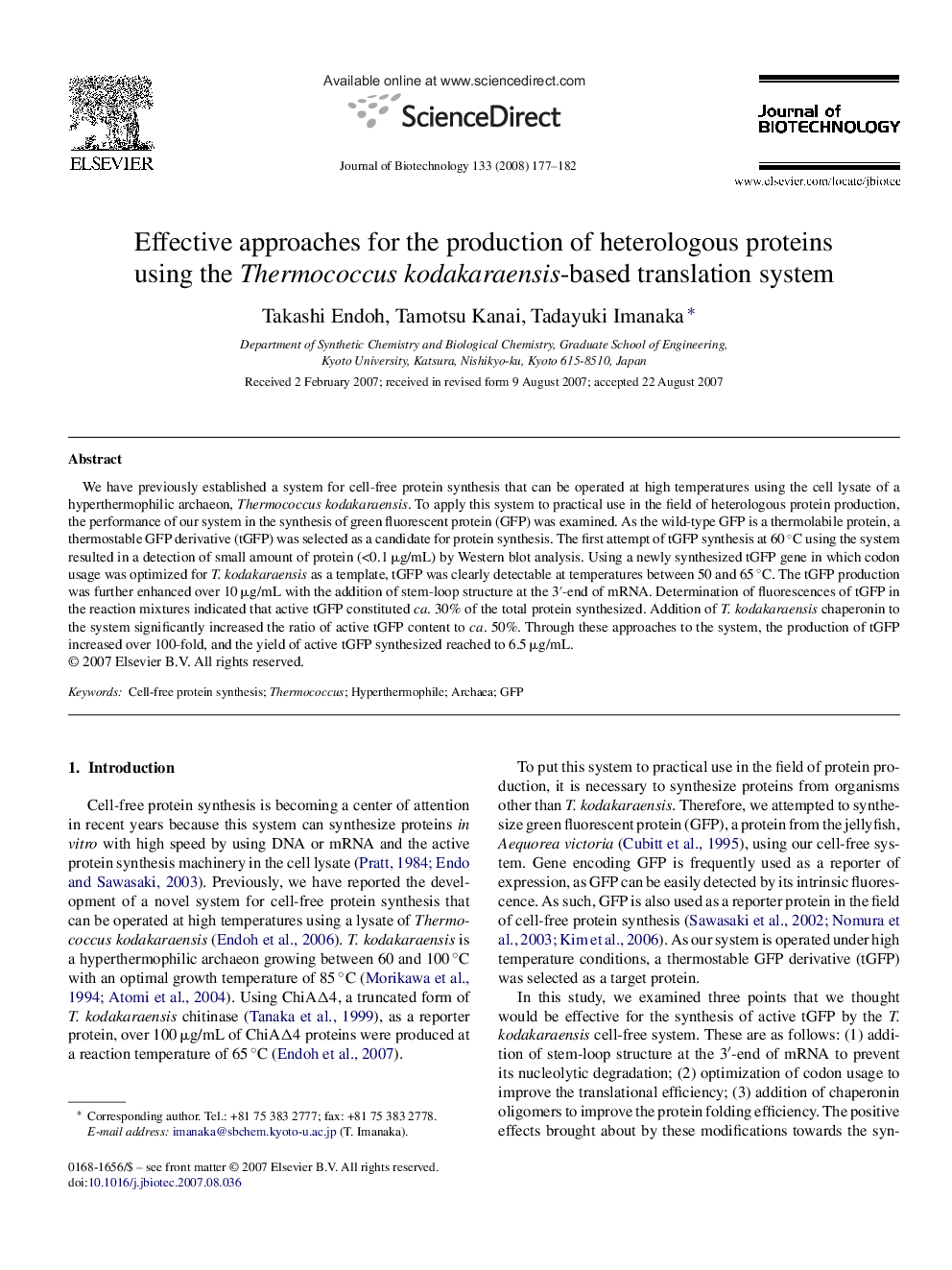| Article ID | Journal | Published Year | Pages | File Type |
|---|---|---|---|---|
| 24922 | Journal of Biotechnology | 2008 | 6 Pages |
We have previously established a system for cell-free protein synthesis that can be operated at high temperatures using the cell lysate of a hyperthermophilic archaeon, Thermococcus kodakaraensis. To apply this system to practical use in the field of heterologous protein production, the performance of our system in the synthesis of green fluorescent protein (GFP) was examined. As the wild-type GFP is a thermolabile protein, a thermostable GFP derivative (tGFP) was selected as a candidate for protein synthesis. The first attempt of tGFP synthesis at 60 °C using the system resulted in a detection of small amount of protein (<0.1 μg/mL) by Western blot analysis. Using a newly synthesized tGFP gene in which codon usage was optimized for T. kodakaraensis as a template, tGFP was clearly detectable at temperatures between 50 and 65 °C. The tGFP production was further enhanced over 10 μg/mL with the addition of stem-loop structure at the 3′-end of mRNA. Determination of fluorescences of tGFP in the reaction mixtures indicated that active tGFP constituted ca. 30% of the total protein synthesized. Addition of T. kodakaraensis chaperonin to the system significantly increased the ratio of active tGFP content to ca. 50%. Through these approaches to the system, the production of tGFP increased over 100-fold, and the yield of active tGFP synthesized reached to 6.5 μg/mL.
